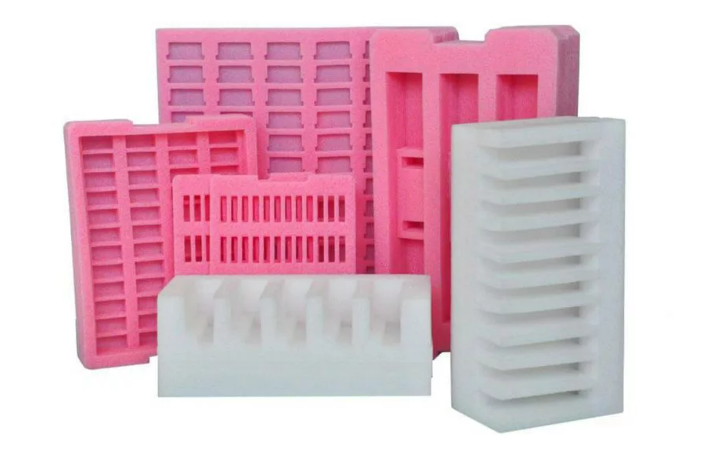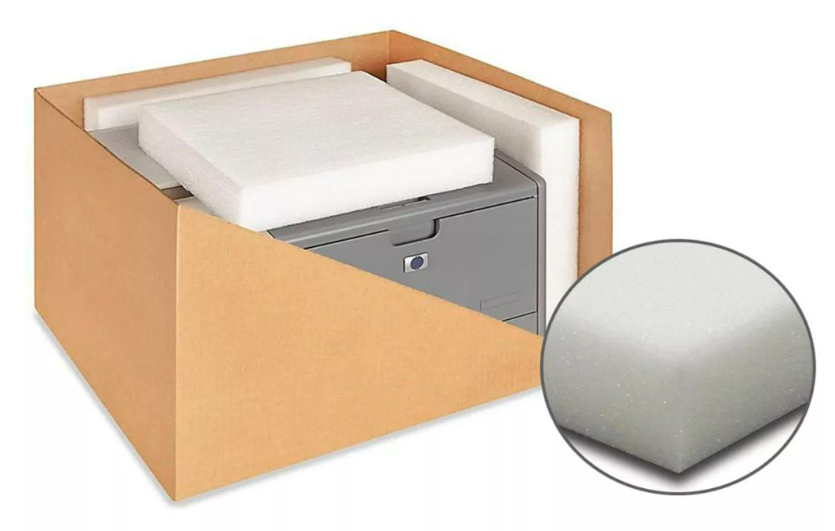
EPE Foam
EPE foam, or Expanded Polyethylene foam, is one of the most widely used plastics in production. What is polyethylene foam? It is a thermoplastic resin, which means that it can be melted by heating and cooled to form different shapes and objects.
Physical Properties of EPE Foam
EPE foam is a harmless plastic and has no taste or odour.
It is a very popular material for packaging goods as it is light in weight and flexible. It can absorb shock and provide good cushioning to delicate objects.
EPE has a high weight-to-strength ratio and high thermal resistance. It can be heated and melted multiple times and reshaped into other new objects due to the high EPE foam temperature range.
EPE foam is resistant to water, oils, and many chemicals. It is also a very good insulating material. EPE is available in different densities, according to its application or purpose.
Physical Properties of EPE Foam
EPE foam is a harmless plastic and has no taste or odor.
It is a very popular material for packaging goods as it is light in weight and flexible. It could absorb shock and provide good cushioning to delicate objects.
EPE has a high weight-to-strength ratio and high thermal resistance. It can be heated and melted multiple times and reshaped into other new objects due to the high EPE foam temperature range.
EPE foam is resistant to water, oils, and many chemicals. It is also a very good insulating material. EPE is available in different densities, according to its application or purpose.

Is EPE Foam Recyclable?
Yes! This is probably one of the most important characteristics of foamed polyethylene due to the huge potential impact it can have on the environment.
Expanded polyethylene foam can be melted and reshaped into various shapes multiple times. This is due to the high thermal resistance properties that enable it to maintain its chemical structure even when subjected to high temperatures and turned into molten plastic.
This is a very important property of epe material that allows it to be reused and recycled, reducing the amount of plastic in the environment.
However, there is very limited number of companies who offer recycling EPE, contributing to a very low global recycling rate. It is crucial to either melt and recycle EPE or compact the plastic in order to prevent the burning of EPE waste or adding to landfills.
Among the most common methods of recycling are reusing EPE or bonding and grinding of expanded polyethylene. Recycled EPE can be used for packaging material or as an underlay for carpeting in large rooms.
Why Polyethylene is Not Biodegradable
The term in-biodegradable is used to describe polymers that do not break at any point to natural, environmentally friendly conditions over biological processes.
A majority of plastics are non-biodegradable because plastic is widely used as it is cheap, durable, and versatile.
However, certain conditions fasten the degrading process of polythene. They include moisture, oxygen, sunlight, composting, and biodegradation enhancement through reduction of the hydrophobic polymer, and an increase of hydrophilic properties.
However, it is still an environment-friendly material as it can be easily recycled into new objects like EPE foam insulation. EPE foam recycling is a fairly simple process, which involves heating it until it melts and then reshaping it or remoulding it.
What Are The Advantages of EPE Foam?
There are multiple advantages of EPE foam, which we will be listing down in this section:
1. Extremely Flexible:
EPE foam is a very flexible material compared to other forms of foam. EPE thus gives most protection for oddly shaped objects.
2. Superior Shock Absorbency:
The closed cell structure of EPE foam makes it able to withstand and absorb high amounts of shock or stress and provide good cushioning to the object it is covering.
3. Regains Form Easily:
Another advantage of expanded polyethylene is that it quickly regains its original shape after the source of stress or shock has been removed. It cannot be broken, fractured, crumbled, or shattered.
4. Resistance To Chemicals:
EPE foam is highly resistant to strong corrosive chemicals like solvents, acids, and alkalis. This makes it suitable for providing a barrier or shield for extra protection while storing and handling these chemicals.
5. Resistance to Water/ Moisture:
The chemical structure of expanded polyethylene foam makes it almost impermeable. EPE, therefore, does not absorb water or allow it to pass through. It is thus used as water protection for materials.
6. Resistance to Static:
Some forms of EPE are highly resistant to static and thus do not attract dust and other tiny particles to their surface.
7. Insulation Properties:
EPE foam has very low thermal conductivity and thus offers the best insulation against heat.
8. Non-Toxic And Food Safe:
EPE foam is nontoxic and thus can be used for food packaging. It is also resistant to the growth of microbes and fungi on its surface. It is odorless.
9. Ease of Handling:
EPE foam is fairly easy to use. It is easily cut, molded, shaped and glued to other objects or to itself. It can easily be shaped into various objects without the use of expensive equipment or molds.
10. Extremely Light Weight:
Although quite tough, EPE foam is very lightweight, thus making it easy to transport and handle. It can be used for a wide variety of applications due to this property.
11. Usable Temperature Range:
EPE foam can be used within the temperature range of 40 to 70 degrees without affecting its structure or any of its properties thus making it very suitable for a wide variety of applications that require heat or electrical insulation.
12. Aesthetics:
EPE foam can be dyed in a variety of colors, thus allowing for color coding or purely aesthetic applications.
